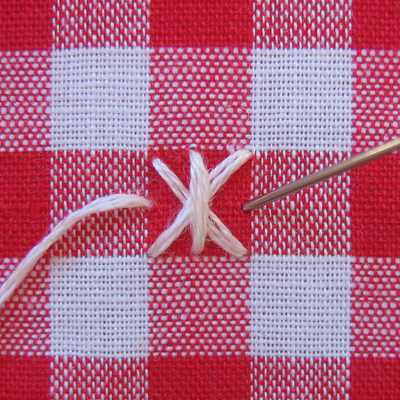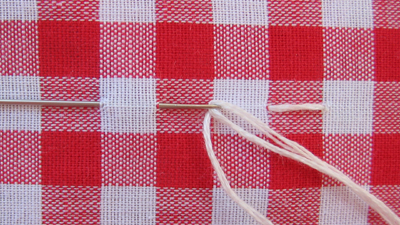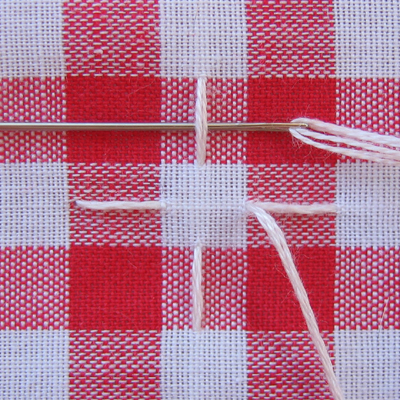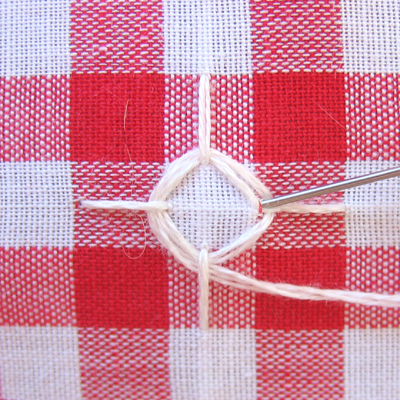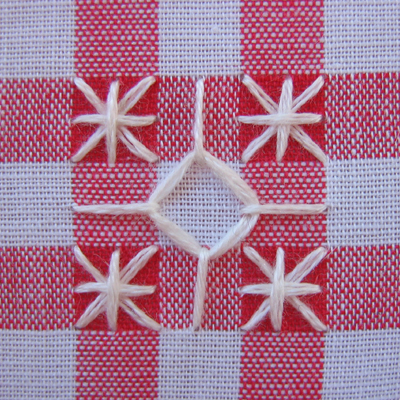When I sat down to work on and photograph this stitch I ran into all sorts of problems. I'm embarrassed to say that I couldn't figure out how to do it, either from the written directions or from the drawings. Maybe I was overtired—who knows? But then I found the stitch in another book—one with photos—and I "got" it. And that's why I show you step-by-step photos. It's not that these stitches are hard to do. In fact, once you've figured them out and completed a few inches of embroidery, you'll laugh at yourself and wonder what the problem was. Just what I'm doing right now :)
So, without further ado, I present the Braid stitch. You'll want to work with two parallel drawn lines for this to keep the top and bottom aligned and you'll work from right to left.
Here's the original drawing, which doesn't look so bad now (but oh, those written directions made no sense at all)
Start by bringing your thread to the front on the bottom line. Then make a loop like this (first loop the thread to the left, then flip the loop over from right to left). This is an awkward motion and didn't come automatically to me for some time.
Holding the loop with your thumb (not shown in photo), take a long vertical stitch from the top line to the bottom. Keep the threads out of the way exactly as shown.
Now loop the working thread from right to left under the tip of the needle.
Pull the loop tightly around the needle.
Pull the thread through with a downward motion, holding the loop down lightly with your thumb. Be a little careful here to not pull too tightly. There's nothing holding the top loop, it's just lying alongside that top thread. If you pull too much it makes a real mess (trust me on this one).
Make a second loop like you did in the first step.
Again insert the needle through the loop, making a stitch from the top to the bottom line. Loop the thread under the needle as you did before. Pull the thread through to complete the second stitch.
Continue working until you reach the end of your line.
Here's what it looks like.
You may be wondering why my thread looks different this time. It's because I'm using something called perle cotton. Perle cotton is a tightly twisted pure cotton thread that doesn't get divided into strands when used. It was recommended for this stitch—for it's textural qualities—so I decided to try it. It comes in four weights and mine is perhaps too fine for this stitch. That's all I had on hand but I think a heavier weight would have worked better. It was also recommended that you work this stitch fairly small with the stitches close together. I didn't do either but it would have been impossible to show what was going on at a smaller size. As with all stitches, varying the length and spacing will give you different looks. Learn the basic steps first and then experiment to get the look you like.












